
Introduction
The climate crisis is one of humanity’s most urgent challenges in the 21st century. Its effects are felt globally, manifesting in rising temperatures, extreme weather events, and changing precipitation patterns. These environmental changes have far-reaching implications, particularly concerning social stability and conflict. One of the most critical yet often overlooked aspects of the climate crisis is its direct connection to conflict. As natural resources become increasingly scarce due to climate change, competition for these resources can exacerbate existing tensions, leading to instability and violence.
This article delves into the intricate connections between climate change and conflict, exploring how factors such as water scarcity, extreme heat, famine, and displacement contribute to global instability. We will examine case studies from regions heavily affected by these issues, including Sudan, Ethiopia, and Central America. Furthermore, we will consider the responses of international organizations and governments, the role of climate refugees, and potential future hotspots for climate-driven conflict. By emphasizing the human stories behind these statistics, we aim to foster a deeper understanding of the urgent challenges posed by climate change and conflict.
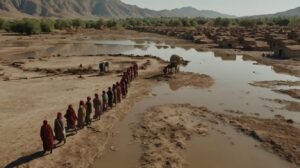
The Interconnection of Climate and Conflict
Water Scarcity: A Recipe for Instability
Water is an essential resource for life, agriculture, and economic development. However, climate change has led to increased evaporation rates, altered precipitation patterns, and prolonged droughts, resulting in water scarcity in many regions. As freshwater resources become limited, competition over access to water can escalate tensions between communities, agricultural sectors, and nations.
Case Study: Sudan
Sudan provides a stark illustration of how water scarcity can lead to conflict. The Darfur region, in particular, has experienced years of drought and environmental degradation, exacerbating existing tensions between agricultural and pastoralist communities. As competition for water resources intensifies, violent clashes have erupted, leading to widespread displacement and humanitarian crises.
In Darfur, more than 2.5 million people have been forced from their homes due to ongoing violence and resource shortages. The situation is dire, with many living in overcrowded refugee camps where access to clean water, food, and medical care is severely limited. The international community has struggled to respond effectively to this complex crisis, highlighting the urgent need for sustainable water management and conflict resolution strategies.
The conflict in Sudan is not solely an environmental issue; it is also deeply intertwined with social, political, and economic factors. The legacy of colonialism, ethnic divisions, and political marginalization has all contributed to the current situation. Addressing these root causes is essential for achieving lasting peace and stability in the region.
Governance and Water Management
Effective governance and management of water resources are crucial for preventing conflict. In Sudan, the lack of equitable distribution of water resources has fueled tensions among different ethnic groups. The government’s failure to address the needs of marginalized communities exacerbates grievances, leading to a cycle of violence. Sustainable water management practices, including community-based water governance, can help mitigate these conflicts by fostering collaboration among users and promoting equitable access.
Heat and Its Consequences
Rising global temperatures are another critical factor contributing to social instability. Communities that depend on agriculture are particularly vulnerable to extreme heat, which disrupts crop yields and exacerbates food insecurity. As agricultural productivity declines, competition for resources can intensify, leading to conflicts among communities.
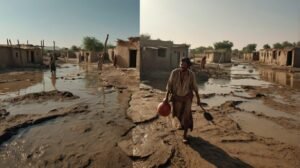
Case Study: Ethiopia
Ethiopia provides a compelling example of how climate-induced heat stress can lead to conflict. Prolonged heat waves have significantly decreased agricultural productivity, threatening food security and increasing tensions among communities. While the government has attempted to implement climate-resilient agricultural practices, the challenges remain significant, particularly in regions already facing ethnic and political tensions.
As farmers struggle to adapt to changing conditions, the risk of violent confrontations escalates. In Ethiopia, the ongoing conflict in the Tigray region is a case in point. The Tigray People’s Liberation Front (TPLF) has been engaged in a violent struggle against the Ethiopian government, with resource competition—especially over water and land—playing a significant role in exacerbating tensions. Addressing the underlying issues of resource management and equitable distribution is crucial for resolving such conflicts.
Famine: A Catalyst for Conflict
Famine is a devastating consequence of climate change that can incite conflict as communities compete for dwindling resources. In regions where agriculture is the backbone of the economy, food insecurity can lead to desperation and violence.
Case Study: Central America
In Central America, particularly in the Dry Corridor, climate change has resulted in severe agricultural losses due to prolonged droughts and erratic rainfall patterns. Countries like Honduras and Guatemala have witnessed a significant increase in food shortages, leading many to migrate in search of better opportunities. This mass migration often creates tensions in host communities, where resources are already stretched thin.
As families leave their homes due to hunger, they face immense challenges in their new environments, including discrimination and limited access to jobs and housing. The interplay between famine and migration underscores the urgent need to address the root causes of food insecurity and provide support for vulnerable populations.
The situation in Central America is further complicated by the fact that migration is often a survival strategy in the face of climate-induced disasters. Many families are forced to leave behind their homes and livelihoods, facing dangerous journeys in search of safety and stability. This migration can lead to social tensions and conflict in host communities, as newcomers compete for limited resources.
In addition to immediate humanitarian assistance, long-term solutions must focus on building resilience in agricultural systems. This includes investing in climate-smart agriculture, which emphasizes sustainable practices that can withstand the impacts of climate change. Education and training for farmers can also play a crucial role in promoting adaptive strategies and ensuring food security.
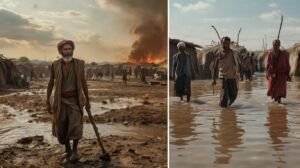
Displacement and Climate Refugees
As climate change continues to exacerbate environmental issues, the number of climate refugees is on the rise. The United Nations estimates that by 2050, up to 200 million people could be displaced by climate-related events. These individuals often face significant challenges in their new communities, including discrimination, limited access to resources, and increased competition for jobs and housing.
The Human Cost of Displacement
Displacement due to climate change not only affects individuals and families; it disrupts entire communities and social structures. When people are forced to leave their homes, they often lose their livelihoods, cultural ties, and support networks. The psychological impact of displacement can be profound, leading to feelings of hopelessness and despair.
In many cases, climate refugees are not recognized as such under international law, which complicates their access to support and protection. The lack of legal recognition can exacerbate their vulnerability, making it difficult for them to access basic services and rights.
The Role of International Organizations
International organizations, including the UN and various NGOs, are increasingly recognizing the plight of climate refugees. Initiatives aimed at providing support and resources to affected communities are essential for addressing the challenges posed by displacement. These efforts must focus on both immediate humanitarian assistance and long-term solutions that promote resilience and adaptation.
Collaboration between governments, NGOs, and local communities is vital for creating effective strategies to address the complexities of climate-induced displacement. By working together, stakeholders can develop comprehensive approaches that prioritize the needs of vulnerable populations and promote sustainable development.

Impact on Agriculture and Food Supply Chains
Agriculture is at the heart of many economies, particularly in developing regions. However, climate change poses a severe threat to agricultural production and food supply chains. Extreme weather events, such as floods and droughts, can destroy crops and disrupt food distribution networks.
The resulting food insecurity can lead to social unrest, as communities struggle to access necessities. Governments and organizations must prioritize climate-smart agricultural practices to ensure food security and stability. This includes investing in sustainable farming techniques, improving water management, and supporting local farmers in adapting to changing conditions.
The Importance of Sustainable Agriculture
Sustainable agriculture emphasizes practices that maintain productivity while minimizing environmental impact. Techniques such as crop rotation, agroforestry, and organic farming can enhance resilience to climate change and reduce reliance on chemical inputs. By promoting sustainable practices, farmers can better withstand the impacts of extreme weather and ensure food security for their communities.
In addition to promoting sustainable agriculture, investments in agricultural research and development are essential. Innovations in crop varieties, pest management, and soil health can significantly enhance productivity and resilience. Collaborative efforts among governments, research institutions, and NGOs can facilitate the exchange of knowledge and resources, fostering innovation in the agricultural sector.
Food Supply Chains and Resilience
Food supply chains are complex networks that connect producers, distributors, and consumers. Climate change can disrupt these networks, leading to food shortages and price spikes. Building resilience within food supply chains is essential for ensuring food security and preventing conflict.
Stakeholders must prioritize the development of robust supply chains that can withstand climate-related disruptions. This includes investing in infrastructure, enhancing logistics, and fostering collaboration among various actors within the food system. By creating more resilient supply chains, communities can better adapt to the challenges posed by climate change and reduce the risk of conflict.
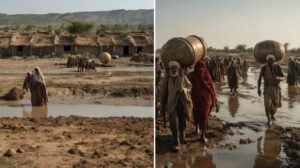
UN and NGO Responses
The United Nations and various NGOs have recognized the urgent need to address the interconnected issues of climate change and conflict. Initiatives aimed at promoting sustainable development, enhancing resilience, and fostering peace are essential in mitigating the impacts of climate-driven instability.
Collaborative Efforts
Effective responses require collaboration between governments, NGOs, and local communities. Programs promoting water management, innovative agricultural practices, and community engagement can help build resilience and prevent conflict. By empowering local communities and fostering cooperation, we can create sustainable solutions that address both climate change and the social tensions it exacerbates.
International Cooperation
International cooperation is crucial for addressing the global nature of climate change and its impacts on conflict. Collaborative efforts among nations can facilitate the sharing of knowledge, resources, and best practices. Initiatives such as the Paris Agreement highlight the importance of collective action in combating climate change and promoting sustainable development.
Furthermore, international organizations play a vital role in coordinating efforts to address climate-driven conflict. By facilitating dialogue, providing technical assistance, and mobilizing resources, these organizations can help vulnerable communities adapt to the challenges posed by climate change.
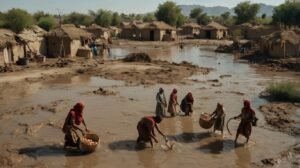
Future Hotspots for Climate-Driven Conflict
As climate change continues to reshape the global landscape, certain regions are likely to become future hotspots for conflict. Areas with high vulnerability to water scarcity, extreme weather, and food insecurity must be monitored closely.
Regions at Risk
Regions such as the Sahel in Africa, South Asia, and parts of the Middle East are particularly susceptible to climate-driven conflict. These areas face a confluence of challenges, including water scarcity, food insecurity, and social tensions. Proactive measures, including investment in sustainable development and conflict resolution, are essential to prevent future crises.
The Sahel region, in particular, has seen a rise in conflict related to resource competition among pastoralists and farmers. As climate change exacerbates drought conditions, the potential for violence increases. Addressing the root causes of conflict in the Sahel requires a comprehensive approach that focuses on sustainable resource management, community engagement, and conflict resolution.
Preparing for Future Crises
To mitigate the risk of climate-driven conflict, governments and organizations must prioritize preparedness and adaptation. This includes developing early warning systems, investing in climate-resilient infrastructure, and supporting vulnerable communities in building resilience.
Additionally, addressing the social and political factors that contribute to conflict is essential. Promoting inclusive governance, fostering dialogue among communities, and addressing historical grievances can help build trust and cooperation, reducing the risk of violence.
The Economic Implications of Climate-Driven Conflict
The economic repercussions of climate-driven conflict are profound and far-reaching. As regions experience instability due to resource competition, agricultural productivity declines, and economies suffer. This creates a vicious cycle where poverty and unemployment fuel further conflict, leading to even greater instability.
Economic Disruption in Conflict Zones
Conflict disrupts local economies, leading to loss of livelihoods and increased poverty. In regions affected by climate change, such as the Sahel and Horn of Africa, agricultural productivity is severely impacted. Farmers face crop failures due to extreme weather, leading to food shortages and rising prices. As a result, communities struggle to meet their basic needs, and tensions rise.
Moreover, the destruction of infrastructure during conflicts hampers economic recovery. Roads, markets, and irrigation systems are often damaged or destroyed, making it difficult for communities to access resources and rebuild their livelihoods. International aid can provide temporary relief, but sustainable solutions require long-term investment in rebuilding and resilience.
Global Economic Consequences
The impacts of climate-driven conflict extend beyond local and regional economies, affecting global markets and trade. Disruptions in agricultural production can lead to price spikes in food commodities, impacting consumers worldwide. Additionally, increased migration due to conflict can strain resources in host countries, leading to political tensions and economic challenges.
Climate change and conflict have economic implications that resonate across borders. As nations grapple with the consequences of climate change, the need for international cooperation and support becomes increasingly urgent. Addressing the economic dimensions of climate-driven conflict is essential for fostering stability and promoting sustainable development.

The Role of Education and Awareness
Education and awareness play critical roles in mitigating the impacts of climate change and preventing conflict. By fostering understanding of the relationship between environmental issues and social stability, communities can better equip themselves to adapt to changing conditions and resolve conflicts peacefully.
Building Resilience Through Education
Educational initiatives focused on climate change can empower communities to take proactive measures in addressing environmental challenges. By providing training in sustainable agricultural practices, water management, and conflict resolution, communities can build resilience and reduce the likelihood of conflict.
Moreover, education can help raise awareness of the importance of collaboration and cooperation in managing shared resources. By fostering dialogue among communities, educational programs can promote understanding and build trust, ultimately contributing to peace and stability.
Engaging Youth in Climate Action
Engaging youth in climate action is essential for fostering a generation of leaders who are equipped to address the challenges posed by climate change. Young people are often at the forefront of environmental movements, advocating for sustainable practices and demanding action from their governments.
By providing platforms for youth to voice their concerns and participate in decision-making processes, we can empower them to be agents of change. This engagement not only helps build resilience in communities but also fosters a sense of responsibility and stewardship for the environment.
The Role of Media in Raising Awareness
The media plays a pivotal role in shaping public perception and understanding of climate change and its implications for conflict. Through investigative journalism, documentaries, and news coverage, the media can highlight the stories of individuals and communities affected by climate change and conflict.
By bringing attention to these issues, the media can encourage public discourse and mobilize action. Awareness campaigns can serve to educate the public and policymakers about the urgent need for sustainable practices and conflict resolution strategies in the face of climate change.
The Psychological Impact of Climate Change
The psychological effects of climate change are often overlooked in discussions about its consequences. The stress and anxiety associated with environmental degradation, resource scarcity, and displacement can have profound effects on mental health.
Mental Health and Anxiety
As communities face the realities of climate change, individuals may experience increased levels of anxiety, depression, and trauma. The uncertainty of future conditions, combined with the immediate impacts of climate-related disasters, can take a toll on mental well-being.
For those displaced by climate change, the loss of home, community, and cultural identity can result in profound grief and a sense of hopelessness. Addressing mental health needs is an essential component of humanitarian responses to climate-driven conflict.
Building Community Resilience
Community resilience is crucial for mitigating the psychological impacts of climate change. By fostering social cohesion, support networks, and community engagement, individuals can find strength in collective action. Programs that promote mental health awareness and provide support services can help communities cope with the challenges posed by climate change.
The Importance of Community-Based Approaches
Community-based approaches to climate change adaptation can enhance resilience and empower individuals. By involving local communities in decision-making processes, we can ensure that solutions are culturally appropriate and responsive to the specific needs of affected populations.
Support for local initiatives, such as community gardens, cooperative farming, and resource-sharing programs, can help build social capital and promote mental well-being. When individuals feel connected to their communities and empowered to take action, they are better equipped to navigate the challenges posed by climate change.
Policy Recommendations for Addressing Climate-Driven Conflict
To effectively address the interlinked challenges of climate change and conflict, comprehensive policy frameworks are essential. These policies should promote environmental sustainability, social equity, and conflict resolution.
Integrating Climate and Conflict Policies
Governments and international organizations must integrate climate change adaptation and conflict prevention strategies. This includes assessing the potential for climate-related conflicts in policy development and ensuring that environmental considerations are included in peacebuilding efforts.
By fostering collaboration among environmental, humanitarian, and security sectors, policymakers can create more holistic approaches that address the root causes of conflict while promoting resilience.
Promoting Sustainable Development
Sustainable development policies that prioritize environmental conservation, social equity, and economic opportunity can help mitigate the impacts of climate change. Investments in renewable energy, sustainable agriculture, and infrastructure can enhance community resilience and reduce the risk of conflict.
Additionally, promoting inclusive governance and community participation in decision-making processes can empower marginalized populations and foster social cohesion.
Enhancing International Cooperation
Addressing climate-driven conflict requires robust international cooperation. Countries must work together to share knowledge, resources, and best practices for climate adaptation and conflict prevention. This includes strengthening international agreements and frameworks that prioritize sustainable development and environmental protection.
Collaboration among governments, NGOs, and local communities is essential for creating effective strategies to address climate change and its impacts on conflict. By fostering partnerships and promoting dialogue, the international community can build a more resilient and peaceful world.
Future Trends and Considerations
As we look ahead, it is essential to consider emerging trends and potential developments related to climate change and conflict. Understanding these factors can help inform proactive measures and strategies for mitigating future risks.
The Role of Technology in Climate Adaptation
Technology can play a significant role in helping communities adapt to the effects of climate change. Innovations in agricultural practices, such as precision farming and climate-resilient crop varieties, can enhance productivity and reduce vulnerability to environmental stresses. Additionally, advancements in water management technologies can improve efficiency and equitable distribution of water resources.
By investing in research and development of new technologies, governments and organizations can help empower communities to confront the challenges posed by climate change and reduce the risk of conflict.
Shifts in Migration Patterns
As climate change continues to impact livelihoods, migration patterns are likely to shift. Traditional migration routes may change, leading to increased competition for resources in new areas. Understanding these dynamics is crucial for preparing for potential conflicts arising from large-scale displacement.
Policymakers must consider the implications of climate-driven migration and develop strategies to support both displaced individuals and host communities. This includes ensuring access to basic services, fostering social cohesion, and addressing potential tensions that may arise.
The Importance of Local Knowledge and Practices
In addressing climate change and conflict, it is essential to recognize and value local knowledge and practices. Indigenous and local communities often possess a deep understanding of their environments and have developed sustainable practices over generations.
Incorporating local knowledge into climate adaptation strategies can enhance resilience and ensure that solutions are culturally relevant. Engaging local communities in decision-making processes fosters a sense of ownership and can lead to more effective outcomes.
Conclusion
The climate crisis is a multifaceted issue that intersects with conflict, resource scarcity, and human displacement. Understanding the link between climate change and instability is crucial for developing effective responses. By addressing the root causes of conflict and prioritizing sustainable practices, we can work towards a more stable and resilient future.
As we navigate the challenges posed by climate change, it is essential to recognize the human stories behind the statistics. Each statistic represents a life affected by conflict, displacement, and instability. By fostering empathy and understanding, we can build a more compassionate world that prioritizes the well-being of all individuals.
The urgency of the climate crisis demands immediate action from governments, organizations, and individuals alike. By working together, we can create a more sustainable and peaceful future for generations to come.
To achieve the ambitious goal of addressing climate-driven conflict, it is imperative to foster a global movement that brings together diverse stakeholders. This includes governments, civil society, academia, and the private sector. Collaborative initiatives that promote knowledge sharing, technology transfer, and capacity building are essential for equipping communities to adapt to the challenges posed by climate change.
A comprehensive and integrated approach is necessary to address the interlinked challenges of climate change and conflict. This includes policies that promote sustainable development, equitable resource management, and social cohesion. By prioritizing these areas, we can help mitigate the impacts of climate change and reduce the risk of conflict, ultimately paving the way for a more resilient and peaceful world.
For more insights into global economic trends and their implications, visit zaroraterishta.com
Key FAQs on Climate Crisis & Conflict
1. How does climate change cause conflict?
Climate change intensifies competition over scarce resources (water, arable land), worsens food insecurity, and displaces populations, creating conditions for violence, especially in fragile regions.
2. Which regions are most at risk of climate-driven conflict?
-
Africa: Sahel, Sudan, Ethiopia (droughts, pastoralist-farmer clashes)
-
Middle East: Iraq, Syria (water scarcity)
-
Central America: “Dry Corridor” (crop failures, migration)
3. What’s the link between water scarcity and war?
Example: In Darfur, Sudan, droughts forced herders into farmers’ lands, sparking ethnic violence that killed 300,000+ and displaced millions.
4. How does extreme heat fuel instability?
-
Crop failures → Food shortages → Protests/riots (e.g., Arab Spring partly triggered by wheat price spikes).
-
In Ethiopia, heatwaves worsened tensions in the Tigray war over fertile land.
5. Are climate refugees recognized internationally?
No. Unlike political refugees, they lack legal protection under the 1951 Refugee Convention, leaving millions vulnerable.
6. What role do international organizations play?
-
UN: Funds climate adaptation (e.g., drought-resistant crops in the Sahel).
-
NGOs: Provide disaster relief but warn of “band-aid solutions” without systemic change.
7. How does climate change affect food supply chains?
Droughts/floods destroy harvests → Price spikes (e.g., 2022 global wheat crisis) → Hunger riots in low-income nations.
8. Can better farming practices reduce conflict?
Yes. Sustainable agriculture (rainwater harvesting, drought-resistant seeds) helps, but requires funding and education.
9. What’s the worst-case scenario?
By 2050, climate change could displace 200 million people, straining resources and escalating wars over water/land.
10. What solutions exist?
-
Local: Community water-sharing agreements (e.g., Kenya’s peace dialogues).
-
Global: COP climate funds for vulnerable nations + conflict-sensitive aid.
